Navigation
Install the app
How to install the app on iOS
Follow along with the video below to see how to install our site as a web app on your home screen.
Note: This feature may not be available in some browsers.
More options
You are using an out of date browser. It may not display this or other websites correctly.
You should upgrade or use an alternative browser.
You should upgrade or use an alternative browser.
Dinoflagellates – Are You Tired Of Battling Altogether?
- Thread starter mcarroll
- Start date
- Tagged users None
- Joined
- Feb 3, 2020
- Messages
- 139
- Reaction score
- 286
I am not an expert but my opinion is:
Photo 1) Hair algae and a type of dinoflagellate
2) Coralline algae
3) Coralline algae
4) type of dino
5) type of dino.
6) hair algae and a type of dino.
Photo 1) Hair algae and a type of dinoflagellate
2) Coralline algae
3) Coralline algae
4) type of dino
5) type of dino.
6) hair algae and a type of dino.
Last edited:
Ostreopsis dinoflagellates. UV and raised NO3/PO4 are helpful.So, this is what my buddy is dealing with. Can anyone ID and what are the corrective measures?





- Joined
- Feb 26, 2020
- Messages
- 72
- Reaction score
- 109
Well, the massive 40W Pentair sterilizer made quick work of my Ostreopsis Dinos. I have it temporarily rigged so the inlet/outlet are in the DT. I plan on plumbing it in permanently after a few weeks of running it in the DT.
Side note, I had a cheap 9W Green Killing Machine laying around so I mounted it in the 90G DT until the Pentair sterilizer arrived. I will say that while it didn't eliminate the Dinos, it absolutely had an effect and reduced the visible Dinos by 60% or more.
The minimum 3W per gallon suggestion seems to work very well. Any smaller and it just isn't powerful enough to eliminate stubborn Ostreopsis.
Now I have a lovely red cyano outbreak I'm dealing with. I'm going to try and deal with it naturally before I use Chemiclean.
I have raised nitrates and phosphates. How does everyone deal with having measurable nutrient levels (thus keeping Dinos at bay), while simultaneously keeping unsightly algae away? How does everyone find the right balance?

Side note, I had a cheap 9W Green Killing Machine laying around so I mounted it in the 90G DT until the Pentair sterilizer arrived. I will say that while it didn't eliminate the Dinos, it absolutely had an effect and reduced the visible Dinos by 60% or more.
The minimum 3W per gallon suggestion seems to work very well. Any smaller and it just isn't powerful enough to eliminate stubborn Ostreopsis.
Now I have a lovely red cyano outbreak I'm dealing with. I'm going to try and deal with it naturally before I use Chemiclean.
I have raised nitrates and phosphates. How does everyone deal with having measurable nutrient levels (thus keeping Dinos at bay), while simultaneously keeping unsightly algae away? How does everyone find the right balance?
- Joined
- May 28, 2018
- Messages
- 40
- Reaction score
- 32
I'm dealing with dinos myself, I'm intrested in more info about using Ozone to erradicate them. can you give more info?Hi Randy thanks for all the information. I had read it before; I am a complete enthusiast of your articles. I have learnt a lot with your contributions to the hobby
I have experienced myself three times that ozone applied through a protein skimmer kills dinoflagellates
These photos are from my previous tank, it was completely covered with Prorocentrum lima:
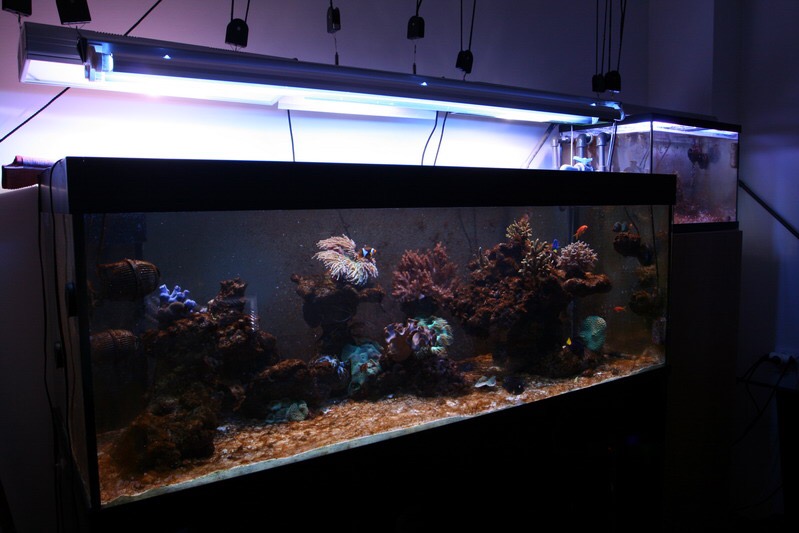
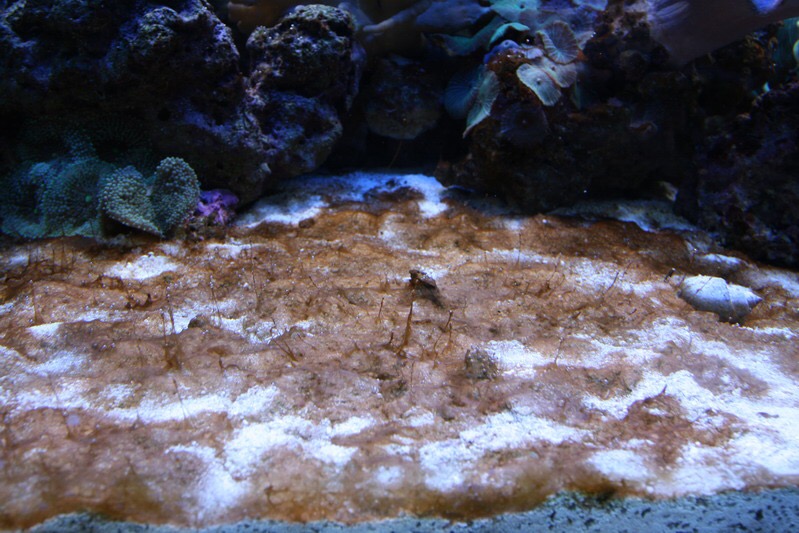
At that time I did not know anything about dinoflagellates in the reef aquarium. The blooms happened after the addition of calcium gluconate in order to increase coralline algae grow (I read this in an Anthony Calfo´s Book). I was impatient and increased the daily dose while my phosphates and nitrates were close to zero. Then the bloom was incredibly strong
I tried many things (like increasing PH with Kalkwasser and so on) but nothing seemed to work. It was very frustrating for me and I started to investigate
I contacted with Dr. Esther Garcés and Dr. Mona Hoppenraph, both of them are worldwide experts involved in the investigation of toxic phytoplankton. Please find below some information about their profiles:
http://pbl.icm.csic.es/es/content/ip-dra-esther-garcés
http://www.academia-net.org/profil/pd-dr-mona-hoppenrath/1174478
I sent a sample of my dinos and Esther identified them as Prorocentrum lima. She isolated the dino and placed into a culture recipient. The Prorocentrum was able to survive during weeks without any nutrient present into the culture media, using only the light as an energy source
We were considering the possibility of using another microorganism to outcompete with the dino in the aquarium
Parvilucifera infectans is a marine alveolate wich parasites several species of dinoflagellates and specifically Prorocentrum. I tried to find a strain of Parvilucifera in any of the Spanish and foreign algae banks without success. Esther had a strain of Parvilucifera Sinerae in her laboratory and inoculated it into the Prorocentrum culture
After several weeks the dino was able to avoid the infection and continued living without any nutrient addition
I was in contact with other hobbits and we reached the following conclusions:
- Dinos are always present in nearly all of aquariums with live rock. Either in "normal" shape or clogged in a cyst
- The scenario with more probabilities for the dinos to start a bloom is when nitrate and phosphate are close to zero and there is a strong carbon dosing
- The next more probable situation for a dinos outbreak is an abrupt reduction in the phosphate concentration (for example, adding a GFO reactor with strong flow with more than needed media over fluidized)
- The microbial diversity in the aquarium is very important to maintain a competition environment for the dino not to take advantage
- When nutrients are very close to zero, the dinos "activate” because the other competitors microorganism, which use phosphate and nitrate for their metabolic processes do not have resources
- An effective but time consuming protocol to reduce the dino population in a reef tank is:
· Stop any water change
· Stop any addition of carbon or any commercial product like aminoacids, etc
· Decrease light intensity and photoperiod
· Decrease circulating pumps flow as much as possible except the return pump
· Increase phosphate concentration very slowly and nitrate according to Redfield ratio
· Dose phytoplankton daily in order to slowly increase phosphate and feed another micro fauna which compete or predate over the dino (for example Oxyrrhis Marina)
- An effective and quick remedy to kill pathogen dinoflagellates is to inject ozone into the tank with a protein skimmer and a redox controller. Start very carefully with a small dose and increase a maximum of 10 mv per day. Redox is an indirect way to estimate the concentration of the TRO that are generated into the tank water when using ozone. This TRO are toxic for dinoflagellates and destroy them. In several days after the ozone administration no rest of dinos are found in the tank
These are pictures two months after the ozone treatment. Sorry but I do not find the photos just after the bloom eradication
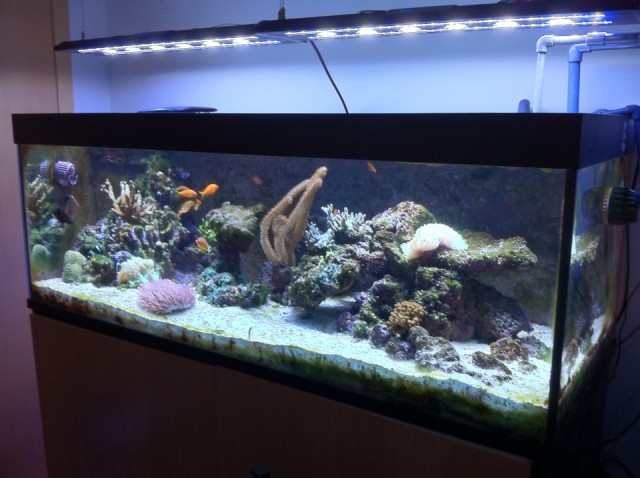
These are photos of my current tank after 5 months of installation. The brown staff in the sand is patches of Ostreopsis Ovata
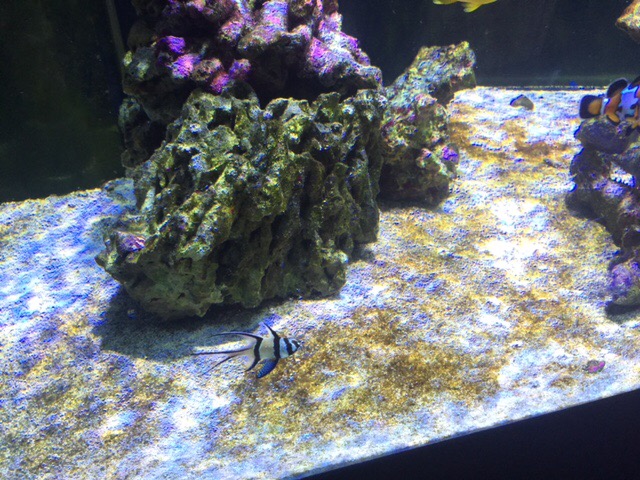
These are photos of the dinos from a collected sample of the sand
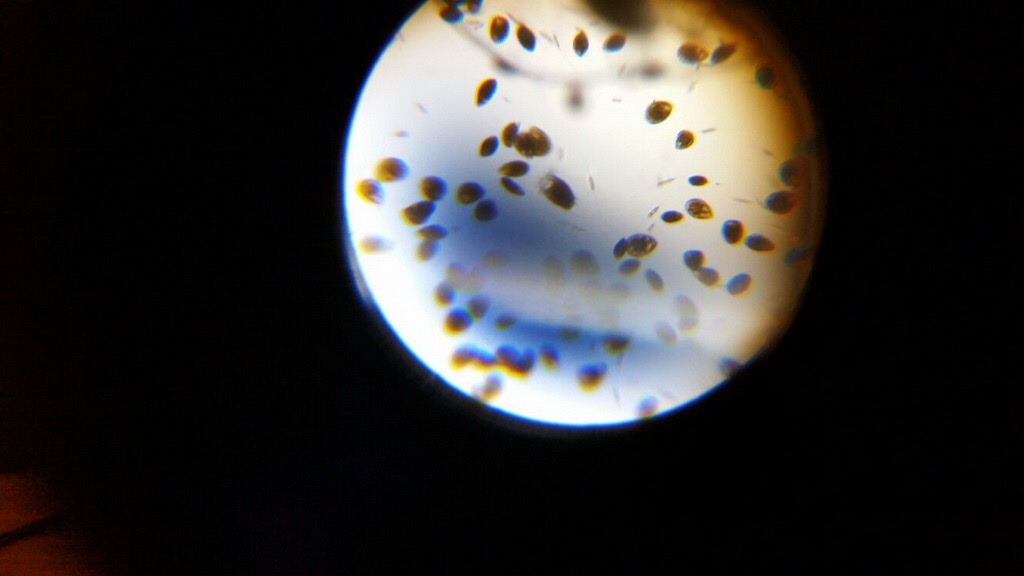
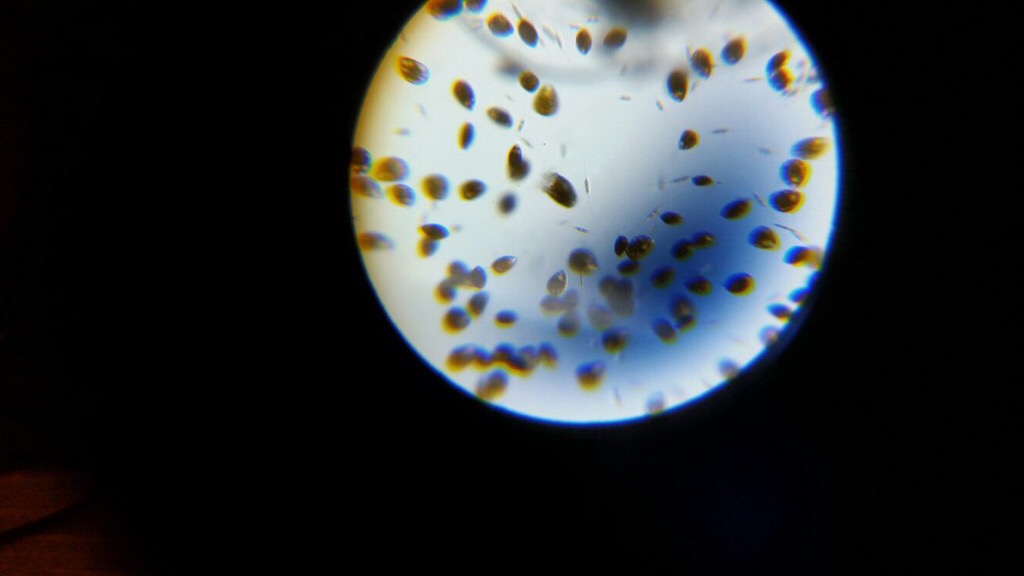
These are some pictures of the sand after de ozone treatment, as you can see there is still a brown stuff over the sand and over the glass
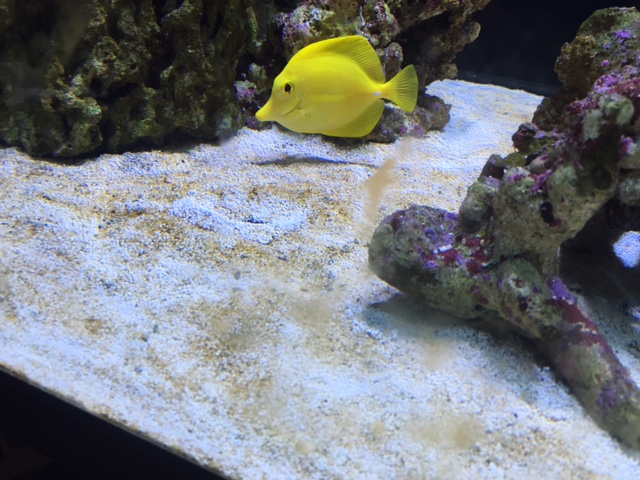
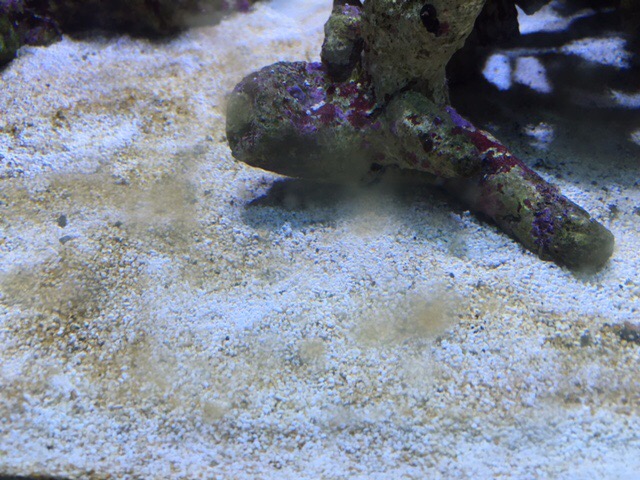
Taking samples and analyzing resulted in only diatom algae:
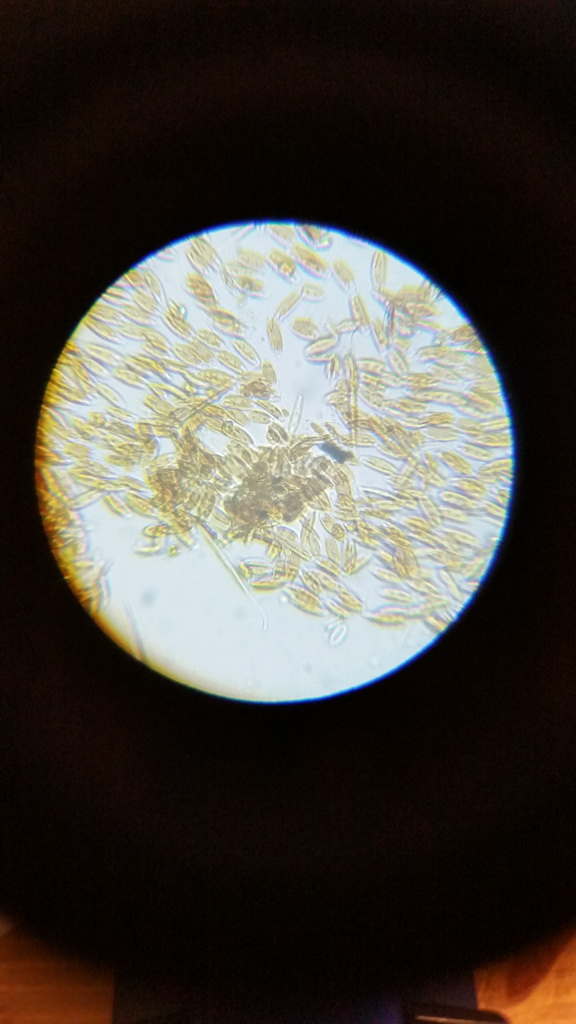
And this are grains of that sand showing diatom algae but no rest of ostreopsis
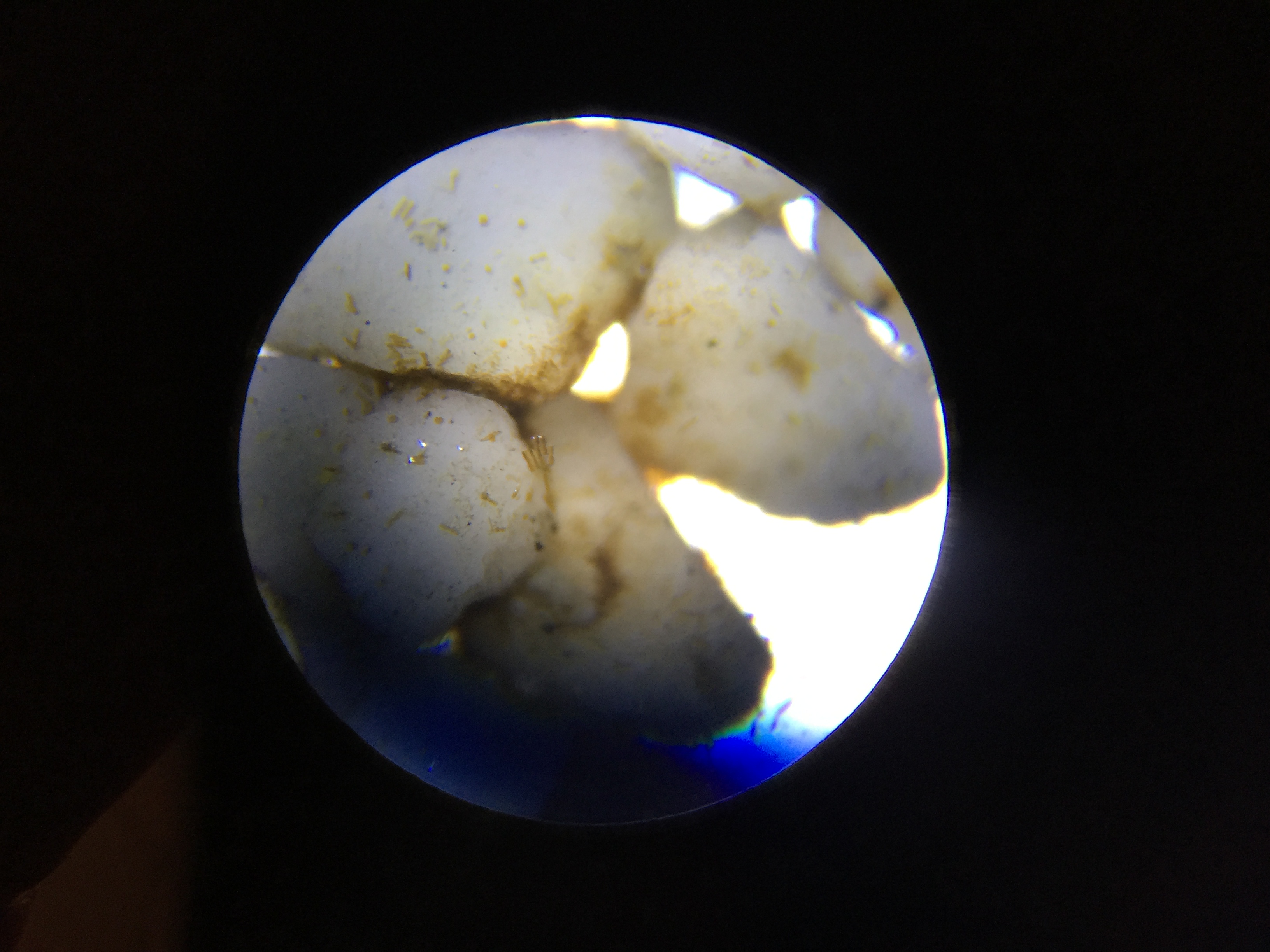
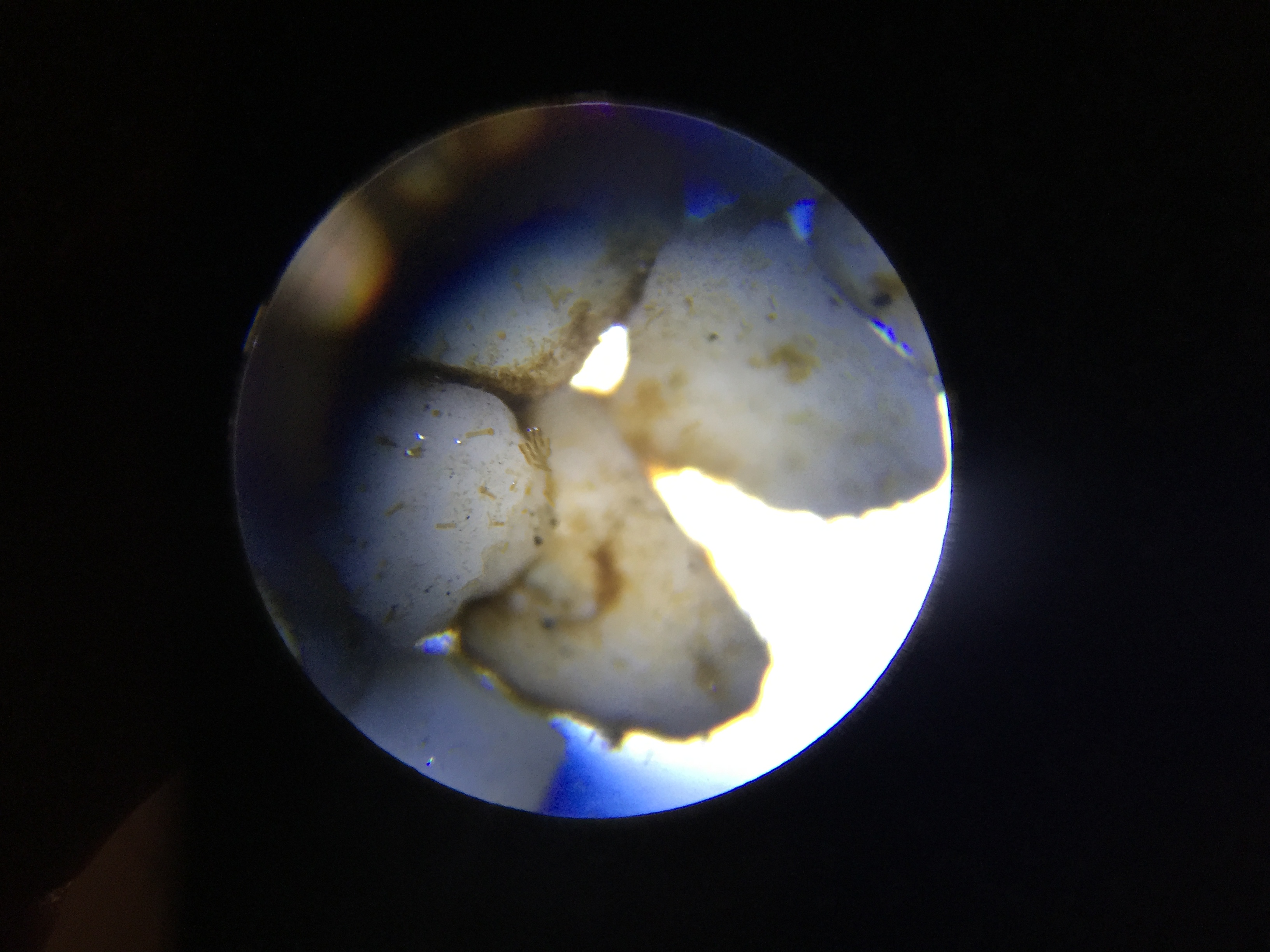
It is not only my own experience but several fellow aquarist I know have killed their dinos quickly and safelly using ozone. So TROs in the water obiously kill dinos and no not kill other beneficial microrganism like the nytrogen cycle bacteria and so on , because I have monitored amonia and no detectable levels are present after ozonation process (and in the case it would have been it would have transformed to nitrite and nitrate due to the ozone treatment, I guess)
I see people fighting with dinos during months and it only takes several days to kill them
I hope this information help those frustated aquarist (as I was) with dinoflagellates problems
BR
is it safe for SPS corals like acros?
will it destroy other microfauna in the tank?
do you dose Ozone to get to specific ORP number?
Any help is apreciated.
Thanks
60 hours of lights out finished. No visible sign of dinos (I know they are still around). No dust in sand, rocks nor glass. Running lights at 50% blue and 50% violet. Also put the HOB on moonlight.
Phyto and tigger pods arrived and culturing both right now.
I had a bottle of Imagitarium Biological Booster for my betta tank, so I dosed it (it's for both fresh and saltwater). At the suggestion of @Michael Gray , I ordered Microbe Lift Special Blend.
I have to test for NO3 and PO4 to get an idea of where they are. NO3 topped the Red Sea test at 4ppm two days ago, so I'll be doing the high value test.
Skimmer is still off.
Phyto and tigger pods arrived and culturing both right now.
I had a bottle of Imagitarium Biological Booster for my betta tank, so I dosed it (it's for both fresh and saltwater). At the suggestion of @Michael Gray , I ordered Microbe Lift Special Blend.
I have to test for NO3 and PO4 to get an idea of where they are. NO3 topped the Red Sea test at 4ppm two days ago, so I'll be doing the high value test.
Skimmer is still off.
I did a 40 hours blackout. Dinos were all gone. But signs of coming back on the 4th day. Been dosing 40ml of neophos perday but still getting very low po4 reading60 hours of lights out finished. No visible sign of dinos (I know they are still around). No dust in sand, rocks nor glass. Running lights at 50% blue and 50% violet. Also put the HOB on moonlight.
Phyto and tigger pods arrived and culturing both right now.
I had a bottle of Imagitarium Biological Booster for my betta tank, so I dosed it (it's for both fresh and saltwater). At the suggestion of @Michael Gray , I ordered Microbe Lift Special Blend.
I have to test for NO3 and PO4 to get an idea of where they are. NO3 topped the Red Sea test at 4ppm two days ago, so I'll be doing the high value test.
Skimmer is still off.
Hey all. Been following along and trying to soak it all in for awhile now because I knew it was inevitable and I have made some mistakes along the way as I grew my system and didnt test for certain things.
4 months in on a 180 gallon system I am starting to see dynos on some of my frag plugs.
It's not in my sump or anywhere i have live rock just started popping up on the plugs and rack under the lamp.
I am in a good position to smash this. I've spent the last cpl days doing water changes and changing out racks. Cleaning tables. I have alot of spare parts and have put everything dyno related outside to bake in AZ sun and it's in the 100's now.
All that being said the question is-
Where exactly is the proper parameter to keep my nitrates and phosphates until now nitrates where undetectable I have compensated for that with amino acids.
I'm sure phosphates are also zero out so how do I bring them up safely and what do you reccomend using?
This is crazy. 15 years ago I cycled a 24 gallon nano tank and went through all these stages without barely testing anything and it all kind of worked itself out lol!
4 months in on a 180 gallon system I am starting to see dynos on some of my frag plugs.
It's not in my sump or anywhere i have live rock just started popping up on the plugs and rack under the lamp.
I am in a good position to smash this. I've spent the last cpl days doing water changes and changing out racks. Cleaning tables. I have alot of spare parts and have put everything dyno related outside to bake in AZ sun and it's in the 100's now.
All that being said the question is-
Where exactly is the proper parameter to keep my nitrates and phosphates until now nitrates where undetectable I have compensated for that with amino acids.
I'm sure phosphates are also zero out so how do I bring them up safely and what do you reccomend using?
This is crazy. 15 years ago I cycled a 24 gallon nano tank and went through all these stages without barely testing anything and it all kind of worked itself out lol!
We checked our tank for dino update because of WA and silicate dosing. We still see Dino's. Scarse. We found one little group that looks like dinos but one thing we noticed they aren't moving like they used too. Does that mean the silicate/wA and po4 and no3 elevation is working? Dead? Or movement isn't an indicator
Huge difference that when my slide was full of millions packed flying around. We have no movement




Huge difference that when my slide was full of millions packed flying around. We have no movement




Same here. Had the 24 watt a little over a week and a half and noticed no difference yet with Ostreopsis.Thank you. I’m running a fairly new Green Killing Machine 24watt in my 75gal.
doesn’t seem to matter. ♂
24 hours since I turned the lights back on, 50% blues and violet 8 hours (I changed that to 6 hours today) and 5% moonlights.
No sign of dinos on rocks, sand or corals and glass is clear. I have the blues on over the HOB so it's hard to see if any sign of dino growth.
talk to me about cheato and pods. I have the opportunity to change direction on that right now. The HOB has a layer of rubble rock and a very small ball of cheato. cheato and pods seem to go hand in hand, but would is there is better set up, like putting down. layer of mud and planting fern caulerpa? Thoughts - the main purpose the HOB is to supply the mandarin the DT tank with pods
No sign of dinos on rocks, sand or corals and glass is clear. I have the blues on over the HOB so it's hard to see if any sign of dino growth.
talk to me about cheato and pods. I have the opportunity to change direction on that right now. The HOB has a layer of rubble rock and a very small ball of cheato. cheato and pods seem to go hand in hand, but would is there is better set up, like putting down. layer of mud and planting fern caulerpa? Thoughts - the main purpose the HOB is to supply the mandarin the DT tank with pods
Three day blackout running 15w UV on a 36g system and here’s what I got. Worse than ever. I was so excited thinking I had cyano. I think the blackout killed off every last competitor and left these super dinos as I’m now calling my strain. Blackout hurt my corals, hurt the competitors, and seems to have boosted the Dinos. All that’s left to try is siphoning the sand out of the tank slowly (so I don’t kill the stability). Guess I’ll be doing that next.
l
Can I please get an ID?
l
Can I please get an ID?
Hey all. Been following along and trying to soak it all in for awhile now because I knew it was inevitable and I have made some mistakes along the way as I grew my system and didnt test for certain things.
4 months in on a 180 gallon system I am starting to see dynos on some of my frag plugs.
It's not in my sump or anywhere i have live rock just started popping up on the plugs and rack under the lamp.
I am in a good position to smash this. I've spent the last cpl days doing water changes and changing out racks. Cleaning tables. I have alot of spare parts and have put everything dyno related outside to bake in AZ sun and it's in the 100's now.
All that being said the question is-
Where exactly is the proper parameter to keep my nitrates and phosphates until now nitrates where undetectable I have compensated for that with amino acids.
I'm sure phosphates are also zero out so how do I bring them up safely and what do you reccomend using?
This is crazy. 15 years ago I cycled a 24 gallon nano tank and went through all these stages without barely testing anything and it all kind of worked itself out lol!
3 things while we wait for the crew to help you,
1. Get good NO3 and PO4 testing kits. I don't see posted numbers and you said "I'm sure phosphates are also zero " which implies you really aren't sure.
2. Stop the water changes. New water fuels dinos for some reason.
3. While I am a huge fan of exporting pests to help the process, dinos can survive extreme conditions, I have read where 4 months after a bleaching and a dry tank, cells were able to survive the hybernation and revive. Don't assume that stuff you clean is dino free. I don't think any tank can be dino free, but we can keep them from taking over.
- Joined
- Feb 3, 2020
- Messages
- 139
- Reaction score
- 286
A bit of an aside. Is that long blue thread cyanobacteria (blue-green algae)? I saw something similar and assumed it was a fiber from my t shirt. LOL.
No ideaA bit of an aside. Is that long blue thread cyanobacteria (blue-green algae)? I saw something similar and assumed it was a fiber from my t shirt. LOL.
- Joined
- May 22, 2016
- Messages
- 6,654
- Reaction score
- 10,293
I’m thinking I might need to re ID my strain because they were pretty visible on the sand as soon as I took the cardboard off.
These are Coolia. Do they appear lighter at lights-on and then get brown-er as lights are on for a few hours? If so, then We need to figure out why the UV didn't irradiate them.Three day blackout running 15w UV on a 36g system and here’s what I got. Worse than ever. I was so excited thinking I had cyano. I think the blackout killed off every last competitor and left these super dinos as I’m now calling my strain.
diatoms can double daily or faster. Why - if there is N, P, Si and light - don't diatoms just grow infinitely? because they run out of something else. Just like dinos. And that's the point. Dinos are too good at competing for N & P. We can't starve them out that way. So we make them compete for the "something else" like Fe / trace metals. With Si present in the system, the diatoms are a good competitor for dinos. They grow faster, in the same spots (as your pics prove), and consume similar things.@taricha why does Diatoms fade if i continue to dose Silicate to outcompete dinos.. we dose to push for a diatom bloom and continue to dose... they just fade and no longer flourish while dosing silicates? lol i hope my dinos go away before my diatoms stop flourishing then
I'd much rather see immobile cells than happy swimming ones. Probably (hopefully) an indicator of stress.Does that mean the silicate/wA and po4 and no3 elevation is working? Dead? Or movement isn't an indicator
it's weird how well that way-too-simple rule of thumb works.Well, the massive 40W Pentair sterilizer made quick work of my Ostreopsis Dinos. I have it temporarily rigged so the inlet/outlet are in the DT. I plan on plumbing it in permanently after a few weeks of running it in the DT.
Side note, I had a cheap 9W Green Killing Machine laying around so I mounted it in the 90G DT until the Pentair sterilizer arrived. I will say that while it didn't eliminate the Dinos, it absolutely had an effect and reduced the visible Dinos by 60% or more.
The minimum 3W per gallon suggestion seems to work very well. Any smaller and it just isn't powerful enough to eliminate stubborn Ostreopsis.
I am not a fan of pods, but I am a fan of chaeto in the context of dinos. pods too often die in dino mucus and fuel blooms. Chaeto supports a more competitive eco-system. And if the dinos colonize chaeto, you can export them easily with a wash-off.The HOB has a layer of rubble rock and a very small ball of cheato. cheato and pods seem to go hand in hand,
I haven't been around that long, but my best explanations are that I suspect we got much better at choking out the harmless uglies leaving only the more harmful ones.This is crazy. 15 years ago I cycled a 24 gallon nano tank and went through all these stages without barely testing anything and it all kind of worked itself out lol!
I see things like this, and I also don't think they are aquatic, I think my fibers come from the paper towels I wipe slides with.Is that long blue thread cyanobacteria (blue-green algae)? I saw something similar and assumed it was a fiber from my t shirt.
even the blue-est cyano is just emerald green with blue pigments combining with green.
its been 5 days since i did a 40 hours blackout and dino seems to b coming back on the rocks and sand(although not as bad as before). i still got my uv running on display. been dosing neophos 40 ml a day on my 120 gallons. next day i check po4 down to low lvls again. 0.01. not sure what else i can do
Having been through dinos a few too many times, I know the answer to the question "how do you deal with cyano & nuisance algae pst dinos?"Well, the massive 40W Pentair sterilizer made quick work of my Ostreopsis Dinos. I have it temporarily rigged so the inlet/outlet are in the DT. I plan on plumbing it in permanently after a few weeks of running it in the DT.
Side note, I had a cheap 9W Green Killing Machine laying around so I mounted it in the 90G DT until the Pentair sterilizer arrived. I will say that while it didn't eliminate the Dinos, it absolutely had an effect and reduced the visible Dinos by 60% or more.
The minimum 3W per gallon suggestion seems to work very well. Any smaller and it just isn't powerful enough to eliminate stubborn Ostreopsis.
Now I have a lovely red cyano outbreak I'm dealing with. I'm going to try and deal with it naturally before I use Chemiclean.
I have raised nitrates and phosphates. How does everyone deal with having measurable nutrient levels (thus keeping Dinos at bay), while simultaneously keeping unsightly algae away? How does everyone find the right balance?

First: You celebrate them!
Next: You tolerate them. Keep testing.
Then: You modestly, manually remove them. Modestly. Just a little bit at a time. Keep testing.
After: You go ahead and move the UV down to the sump but keep running it. Keep testing.
Then: When the algae starts beating the cyano, add the herbivores (if not before). Keep testing.
Finally: Add more tang fish poop and stop dosing. But don't stop testing PO4 in particular.
For me, I have found it very easy to have dino relapses. At least until I kept enough fish and fed them buckets of frozen and nori.
You have to keep going with the Neophos (or whatever phosphate solution you choose). It takes a shocking amount of it to saturate your rock & substrate. Once it is saturated, you'll probably dose 1/4 or less than what it takes to saturate.its been 5 days since i did a 40 hours blackout and dino seems to b coming back on the rocks and sand(although not as bad as before). i still got my uv running on display. been dosing neophos 40 ml a day on my 120 gallons. next day i check po4 down to low lvls again. 0.01. not sure what else i can do
Similar threads
- Replies
- 7
- Views
- 170
- Replies
- 5
- Views
- 357
- Replies
- 4
- Views
- 247



















